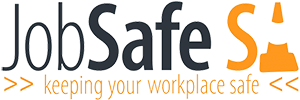A wide range of mechanical equipment is used within industry and examples include power presses, cutting tools, planers, and routers. Approximately 8 out of 10 workplace fatalities and 1 in 4 workplace injuries involve machinery.
There are significant risks associated with using machinery and equipment, and injuries sustained as a result of unsafe use of plant tend to be severe. Mechanical equipment can cause:
- sprains and strains
- open wounds
- fractures
- electrocution and burns
- limb amputations and
- death
These injuries occur through:
- contact or entanglement with machinery
- being trapped between the machine and material or fixed structure
- contact with material in motion
- being struck by material ejected from the machine and
- release of potential energy
- contact with hot surfaces, or exposure to flames or hot fluids
- falls while accessing, operating or maintaining plant
The Occupational Health and Safety Regulations 2010 are designed to protect people at work against the risks to health or safety arising from plant and systems of work associated with plant.
The Regulations apply not only to employers who use plant but also to designers, manufacturer’s, importers and suppliers of plant. The Regulations require that guarding is fitted, as a measure to control risk, to any machinery, equipment, appliance, implement or tool to prevent access to the danger point or area of the plant.
Poor machine guarding practices are one of the greatest contributors to workplace injuries in South Australia. Inadequate machine guarding can result in tragic consequences – loss of fingers, hands or worse. Machine guarding is vital to every workplace that uses machinery and guards need not be complicated nor interfere with productivity.
The Occupational Health and Safety Regulations stipulate that if guarding is to be used to control health and safety risks associated with machines, the guarding must meet the following requirements:
- Guarding must so far as is practicable prevent access to the danger point or area of the machine.
- Guarding is a physical barrier which can only be altered or removed by the use of tools, if using either permanently fixed physical barrier or an interlocked physical barrier is not practicable.
- Any guarding needs to be as difficult as is reasonably possible to by-pass or disable, whether deliberately or by accident.
- Any guarding must not be a health and safety risk in itself.
- All guards should be correctly fitted before operating a machine.
- Make sure the machine operates correctly and that the protective guarding can not be removed while the machine is operating.
PREVENTATIVE MEASURES
As mentioned previously approximately 8 out of 10 workplace fatalities and 1 in 4 workplace injuries involve machinery. Employers have an obligation to keep their employees safe from injury and risks to their health while at work.
Examples of preventative measure that can be put into place for machinery:
- install dual interlock safety systems as a minimum control measure to ensure that machinery moving parts are stopped when access is required to trapping spaces.
- inspect and test the safety system daily, including interlock guards, clutch locks and clutch breaks mechanisms.
- service the plant regularly to prevent faulty operation and rectify any faults promptly.
- trained operators and qualified setters or technicians should check and test-run the plant several times prior to production operations.
- develop procedures with employees and any relevant health and safety representatives for the safe operation of plant. Procedures should be regularly reviewed; e.g. as part of weekly health and safety meetings.
- provide all relevant employees with information, training and instruction on safe working procedures, including isolating procedures. Develop ways of encouraging safe work practices; e.g. operator to demonstrate procedures to other employees.
- put appropriate signage on or near the machinery to alert employees of the dangers of operating this plant.
Emergency stop devices require:
– immediate accessibility in case of emergency.
– both emergency stop buttons and isolation methods on large machines
– more than one stop button be at some multiple operator workstations
|
Types of Machine Guards |
|||
|
Type |
Method of Safeguarding |
Advantages |
Limitations |
| Fixed | Barrier that allows for stock feeding but does not permit operator to reach the danger area. |
|
|
| Adjustable | Barrier that adjusts for a variety of production operations. |
|
|
| Self- Adjusting |
Barrier that moves according to the size of the stock entering point of operation. Guard is in place when machine is at rest and pushes away when stock enters point of operation. |
|
|
| Interlocking Barrier Guards |
Shuts off or disengages power and prevents machine start-up when guard is open. Should allow for inching of machine. |
|
|
For further information about Machine Guarding look at the Australian Standard AS4024, “safeguarding of machinery”
USEFUL LINKS
Specific Machine Hazards and Safeguarding Methods
Website which looks at the hazards and guard solutions for Mechanical Power Presses, Power Press Brakes , Powered and Non-Powered Conveyors, Printing Presses, Roll-Forming and Roll-Bending Machines, Shearing Machines, Food Slicers, Meat Grinders, Meat-Cutting Band Saws, Drill Presses, Milling Machines, Grinding Machines and Slitters.
Sample Machine Guard safety checklist
A simple workplace checklist for looking at the safety and efficiency of machine guarding from Charles Darwin University.
Machine Guarding
SafeWork SA website with Hazard alerts for dough rolling, fleshing machines and much more.
Acknowledgements:
Workcover ACT – www.workcover.act.gov.au
SafeWork SA – www.safework.sa.gov.au
WorkSafe Victoria – www.worksafe.vic.gov.au
U.S. Department of Labour – www.osha.gov
***Please note: Where you read references to Occupational Health, Safety and Welfare Act 1986, this is no longer the current legislation, therefore some information contained within this website may be incorrect. As of January 1st 2013 the Work Health and Safety Act 2012 (SA) became current legislation. We are in the process of updating all information and links to comply with the new current legislation. Thank you for your patience while we undertake this process***
